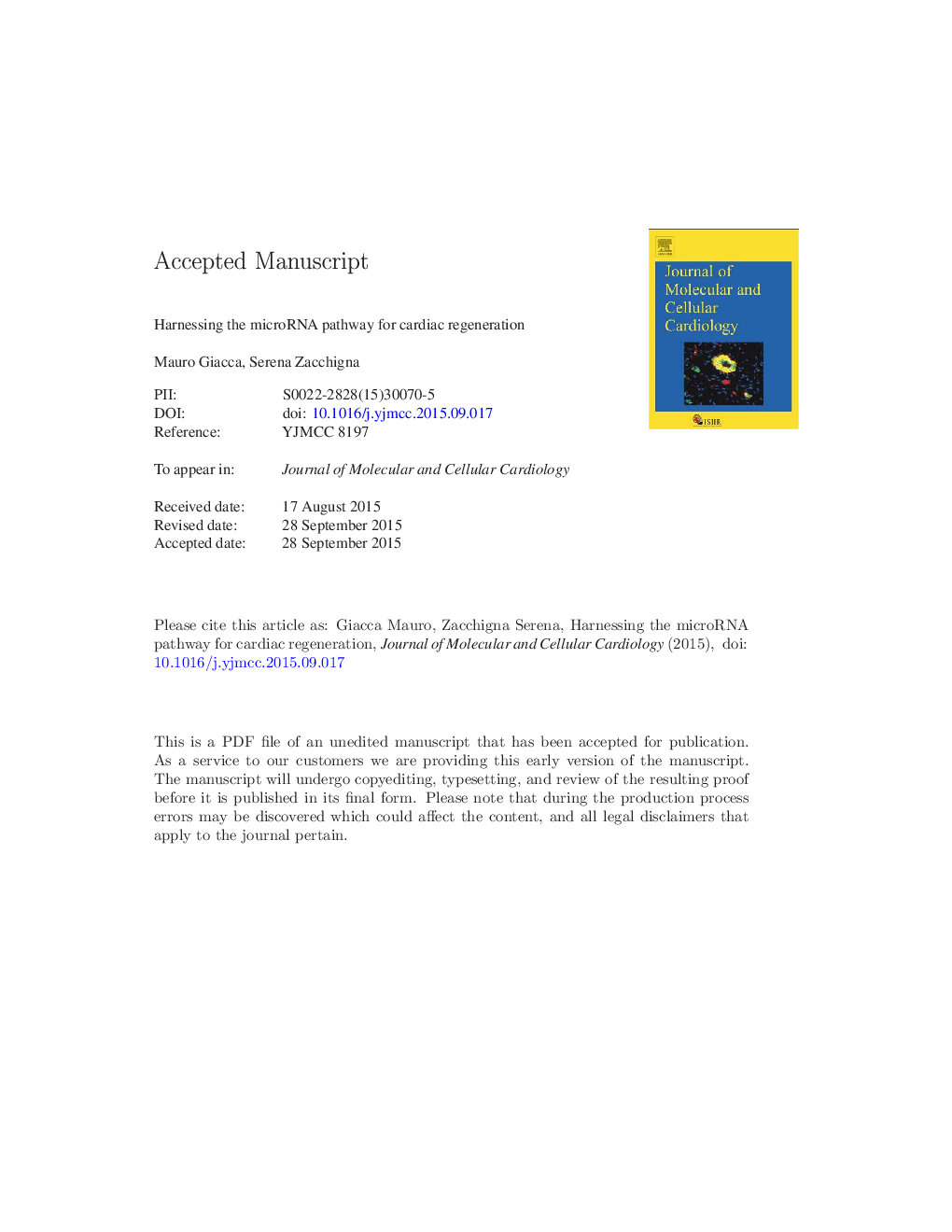| Article ID | Journal | Published Year | Pages | File Type |
|---|---|---|---|---|
| 10953740 | Journal of Molecular and Cellular Cardiology | 2015 | 22 Pages |
Abstract
Mounting evidence over the last few years has indicated that the rate of cardiomyocyte proliferation, and thus the extent of cardiac renewal, is under the control of the microRNA network. Several microRNAs (e.g. miR-1) regulate expansion of the cardiomyocyte pool and its terminal differentiation during the embryonic life; some not only promote cardiomyocyte proliferation but also their de-differentiation towards an embryonic cell phenotype (e.g. the miR-302/367 cluster); a few others are involved in the repression of cardiomyocyte proliferation occurring suddenly after birth (e.g. the miR-15 family); others again are not physiologically involved in the regulation of cardiomyocyte turnover, but nevertheless are able to promote cardiomyocyte proliferation and cardiac regeneration when delivered exogenously (e.g. miR-199a-3p). With a few exceptions, the molecular mechanisms underlying the pro-proliferative effect of these microRNAs, most of which appear to act at the level of already differentiated cardiomyocytes, remain to be thoroughly elucidated. The possibility of harnessing the miRNA network to achieve cardiac regeneration paves the way to exciting therapeutic applications. This could be achieved by either administering miRNA mimics or inhibitors, or transducing the heart with viral vectors expressing miRNA-encoding genes.
Related Topics
Life Sciences
Biochemistry, Genetics and Molecular Biology
Cell Biology
Authors
Mauro Giacca, Serena Zacchigna,
